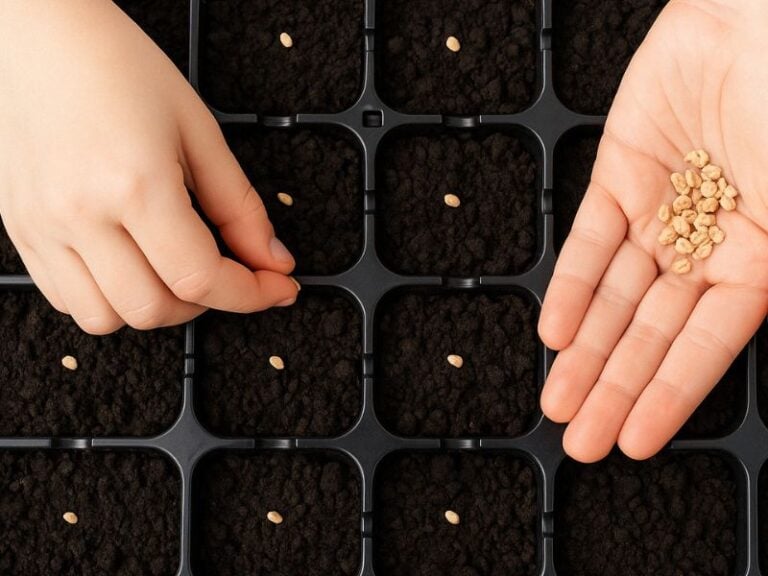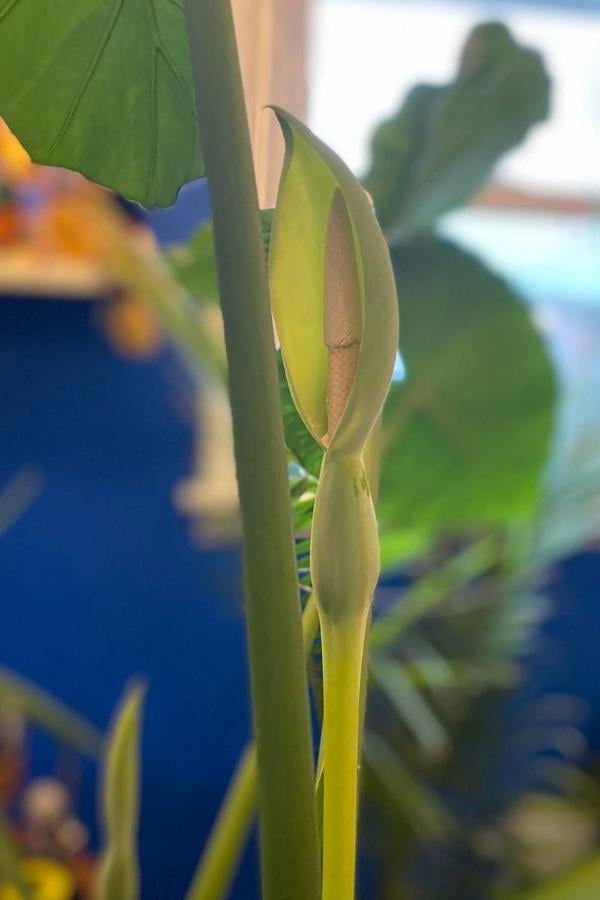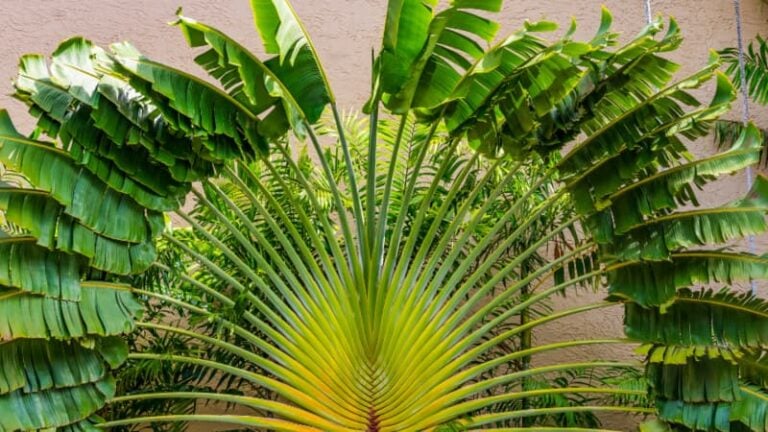As one of the most famous and sought-after fragrances around the world, lavender is a beautiful plant to grow. And it just so happens to be one of the easiest plants to care for, too!
It’s versatile and can thrive in both indoor and outdoor settings. But like many sweet-smelling plants, you no doubt want results quickly.
So how fast does a lavender plant grow? And when can you expect to see, smell and harvest the sweet-smelling flowers?
English lavender is a 13-16 inches tall semi-shrub with many stems that grows quickly and can make up to 500 erect stems. The leaves are between 2 inches long and lancet-shaped and green with a silvery tint. Find sandy, well-draining soil and make sure it gets lots of suns, and you’ll be able to enjoy a beautiful scent from your own home year after year.
Contents
How Long Does It Take Lavender To Fully Grow?

In today’s world, we like to see results as quickly as possible. So how quickly can you expect your lavender to reach its potential?
The truth is, lavender is a slow-growing plant. If you’re growing your plant from germination, cutting, or layering here is a rough guideline on what to expect.
| Lavender Age (Weeks) | Growth |
| 2-4 weeks | Seeds will sprout, and roots begin to develop. |
| 8 weeks | Pot and place in direct sunlight. |
| 10-16 weeks | Some varieties of lavender will bloom in their first year, during summertime. |
| 2 – 5 years | Lavender plant reaches full maturity. Repot every year and prune accordingly. |
Some varieties of lavender plants are incredibly long-lasting and are known to grow up and until 15 years and more. This alone makes them very worthwhile to plant and invest time in. (Source: University of Illinois Extension)
How Fast Does Lavender Grow From Seed?
Lavender plants grow slowly from seed and can take up to 3 months to germinate. For that reason, the best time of year to grow your lavender from seeds is either:
- October (make sure to protect your plant from the winter frost) – this gives it ample time to set down roots
- Early springtime (before the growing season takes hold)
How Fast Does Lavender Grow In Pots?
Although lavender is often classified as a slow-growing plant, pots can help speed up the growing process.
How? With a pot, you can monitor and increase how much water your plant receives. You can also add fertilizer accordingly. And because lavender enjoys up to 8 hours of direct sunlight, you can easily move your plant to capture the sun’s glaze.
Once seeds sprout and roots develop, you can move the pot into warm, direct sunlight where growth can rapidly develop. It can take anywhere from 10-16 weeks to properly bloom fragrant blossoms.
Does Lavender Grow Better Inside Or Outside?
You’ll be glad to hear, the answer is both! Lavender is a versatile plant that can be grown both outside or indoors. That said, it is easier to ensure your indoor setting reaches your Lavender’s demands.
If planting outside, for example, there are two main things you should consider. Lavender enjoys well-drained, well-aerated soils like sand – this may limit where you can place your plant in your garden. Lavender is incredibly vulnerable to changes in temperature and is weak to cold and frost.
How Can I Make My Lavender Grow Faster?
As with any slow-growing plant, patience is a virtue. But there are some small tweaks you can implement to help your lavender grow that little bit faster, and stronger too!
Ensure you give your lavender plant the following:
- It receives up to 5-8 hours of sunlight per day
- Grows in well-draining, well-aerated soil
- Alkaline soil works best – consider adding compost or lime to improve conditions
- Keep your plant moist, but never overwater that soil become soggy
- Use a diluted fertilizer, once every four weeks or so. The best time to start is late winter/early spring to maximum the upcoming growing season.
- Repot your lavender plant every year
Always remember to keep a watchful eye over your plant after you’ve made changes to its care plan, and look for signs of stress.
How to Stunt the Growth of Lavender
Now, I know what you’re thinking. Why on earth would you want to stunt or reduce the growth of a slow-growing plant?
Plants which grow too fast can be misshapen, weaker, and wispy. If you want to reduce the size of your lavender plant and tidy up its appearance, there are some options.
- Place in a bright space with indirect sunlight
- Reduce the temperature and watering frequency
- Move the plant into a more shaded area
- Prune your plant, which reduces its size but promotes fuller growth
Always keep a watchful eye on how your plant responds, and be careful not to cause any undue stress to it.
Factors that Dictate the Growth Rate of Lavender
Like all plants, your lavender will need specific things to reach its full potential. If you’re worried your plant’s growth is stunting, consider the following factors:
Type of Potting soil
The best potting soil to use for your lavender plant should be well-draining and well-aerated. One of the most common reasons your plant will fail is because it is too moist, and the soil is too soggy – this leads to root rot.
I suggest you consider sandy soil, which has large particles that dry quickly. That said, sandy soil is often acidic, and your lavender plant enjoys a slightly more alkaline pH of 6.5-7.5. Specialized lime or compost can help correct the pH range.
Overfeeding
Everyone wants their plants to thrive. But the harsh reality is that sometimes, we care too much, and overfeeding your lavender plant can cause more harm than good.
Overfeeding prevents your lavender plant’s roots from taking up water. It can affect several things, including appearance, speed of growth, and smell.
Here are tell-tale some of the signs of overfeeding:
- Stunted growth and a ‘wilted’ appearance
- Yellow/brown appearance on new growth
- Burnt tips/edges on foliage
- The plant is brittle to touch and feels dried out
- Foul smell
- A layer of fertilizer lying on top of the soil
How to Revive Overfeed Lavender
If all signs point to your lavender being overfed, you can breathe a sigh of relief. There is still time to remedy the situation.
What I suggest you do is:
- Stop fertilizing your plant – immediately
- Remove any fertilizer residue on the soil
- Remove wilted, burnt, or damaged leaves from the plant
- Leach the soil by watering it. Allow water to flush the fertilizer away from roots.
- Repeat four or five times.
I am strongly against repotting the plant in these instances because you don’t want to subject your lavender plant to any additional stress.
Physical Growth Season
Lavender’s growing season is late spring and summertime. Depending on the variety, your lavender will sprout new growth and bloom for up to 3 months.
Improper Watering Practice
Water is one of the most important things you need to get right for your lavender plant. Improper watering comes in two forms:
Under-watering signs include:
- Wilted appearance
- Soil is dry, brittle, and hard to grab
- Lower leaves become yellow and curl
- Dry, frail edges
Overwatering signs include:
- Drooping appearance
- Leaves turning brown
- Foul smell due to root rot
How can we get the watering right?
Because lavender can thrive in hot, drought-like conditions, it’s best to regulate your frequency and only water when necessary. the best practice to water when the top 1-2 inches of soil is dry.
You can do the finger test to determine when to water. Insert your finger up to the second knuckle to feel if the soil is dry or wet. More established plants may require even less attention.
Soil can also help immeasurably with getting your watering right. Lavender plants enjoy well-drained, well-aerated soil.
Sandy soil is a great choice because its large particles allow water to shift through quickly to the roots. Always ensure there are holes at the bottom of the pot that excess water can escape.
Pruning
Pruning is also useful for getting rid of damaged or dead leaves and improving the plant’s shape and appearance. Because lavender blooms in late spring/summertime, you can prune the plant and encourage continued blooming throughout the growing period.
I hear you asking – what happens if you don’t prune lavender? After all, you’ve spent all this time growing your plant, why cut away at it?
Pruning is essential to care for lavender. If you don’t, your lavender will grow large, lanky, and become woody. The result is less flowering, less blooming, and less fragrance.
Things to Consider for Pruning
The best time to prune lavender is in early March. This gives plenty of time for your lavender to recover and sprout new growth.
Never prune during Autumn or Winter, as exposed cuts are more susceptible to harsh frost and colder temperatures, which your lavender will not appreciate.
Focus on removing dead wooden parts damaged foliage and focus on improving the shape of the plant. Be careful not to take too much off in one area, as this can make your lavender plant look very baldy.
Temperature and Humidity
Lavender plants are native to Mediterranean climates. For that reason, they enjoy warm, moderately dry climates ranging from 68-86°F (20-30°C) in temperature.
That said, lavender plants enjoy dry soil and conditions. It’s best to keep average humidity at all times. Avoid placing your plant in a crowded room with other plants, avoid misting leaves and only water the soil directly.
Pests
Because of its signature fragrance, lavender is naturally quite resistant to pests. Quite often, it’s when your plant is in some manner of distress (e.g. under-watering), that pests pose a problem. There are three main ones to consider:
Spittlebugs – also known as cuckoo spit, spittlebugs are the larvae form of froghoppers and can wreak havoc on your poor lavender. Clear indication spittlebugs are present is a frothy-like foam on foliage. To get rid of these, consider wiping down affected areas with a cloth or wash off gently with your hose.
Woolly bear caterpillars – these rusty brown or black caterpillars are a common pest for shrubs, plants, and herbs during Autumn time. They consume plant leaves over a long period and can cause particular damage if there is a large amount of them feasting on one lavender plant. To get rid of them, gently wipe your plant (including under the leaves) with a dilute mixture of soapy water.
Whitefly – whitefly is tiny little insects usually found on the underside of foliage, which cause damage by sucking the juices from your plant. Whitefly is a tell-tale sign your plat is experiencing drought, so a quick remedy is to water more frequently. You can also apply a weak, soapy solution to combat them directly.
Aphids – whilst aphids aren’t a direct threat to lavender, they carry diseases that can prove fatal, and so my advice is to never leave anything to chance. An insecticide works best, as aphids are very susceptible to toxins. Choose a weak formula so that it doesn’t negatively affect your lavender’s condition or fragrance.
The size of the pot
Lavender plants are naturally compact, which means smaller containers and pots are more than ideal to keep them in good condition.
That said, it’s best practice to repot the lavender plant every year, to allow it to expand, grow and establish a healthy root system. After all, they can live for incredibly long lengths of time. Ceramic or terracotta are ideal materials for your pot, given they are usually bigger and thicker in size.
Because lavender enjoys warm, direct sunlight, these two materials will not absorb too much heat and roast your plant’s roots. Ceramic and terracotta also won’t dry out quickly and will resist harsh frost too.
Does Lavender Bloom the First Year?
Every gardener eagerly anticipates the growing season, where they hope to spot fresh, fragrant blooms from their plans. Lavender is no exception to this.
Some lavender varieties will bloom in their first year if seeded before the growing season, which is springtime. Some varieties will bloom for a long time, from 1-4 weeks during summer.
I recommend you harvest blooms early off your lavender, as by that stage your plant is quite capable of producing another set of fragrant flowers by the season’s end.
Quite often with lavender, however, the second and subsequent years will promise a more vibrant, fuller bloom. So long as your plant is showing signs of growth in the first year, remain calm and be patient – don’t be discouraged if your plant is slow off the mark.
Take your time and take care of your lavender plant, your efforts will be worth the wait!







this was very helpful
thx
You are Welcome. Happy to help 🙂